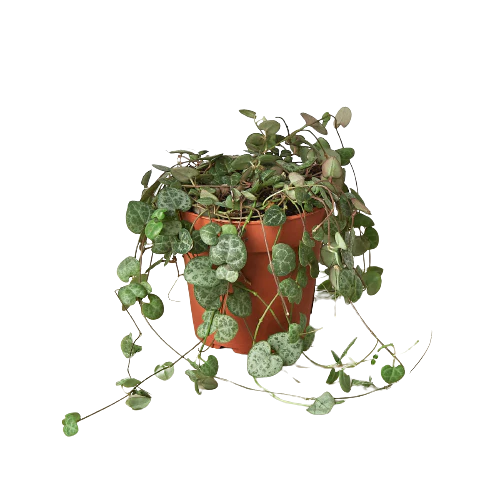String of Hearts
Couldn't load pickup availability
Appearance: String of Hearts gets its name from its cascading vines of heart-shaped leaves. The leaves are typically marbled with shades of green and purple, while the slender vines can trail several feet, making it a great choice for hanging baskets.
Light: String of Hearts prefers bright, indirect light. Some direct sunlight is beneficial, but too much can cause leaf burn. Lower light conditions can result in less vibrant leaf coloration and slower growth.
Water: As a semi-succulent, String of Hearts has good drought tolerance. It prefers to be watered thoroughly and then allowed to dry out completely before the next watering. Overwatering can lead to root rot.
Soil: A well-draining soil mix is essential to prevent waterlogging. A cactus or succulent potting mix, which typically contains more sand or perlite than standard potting soil, is a good choice.
Temperature: String of Hearts prefers average room temperatures, roughly between 65-80°F (18-27°C). It can tolerate a slightly wider range but does not do well with frost or extremely high temperatures.
Propagation: String of Hearts is typically propagated through stem cuttings or by bulbils that form on the vine. Cuttings can be placed in water or directly in soil to root.
Pests and Problems: Common problems include yellow leaves (often a sign of overwatering) and sparse growth (which may indicate insufficient light). String of Hearts can occasionally be affected by pests such as aphids, mealybugs, or spider mites.
In summary, String of Hearts is a charming and relatively easy-to-care-for houseplant that can add a touch of romance to any indoor space. Its unique trailing habit and heart-shaped leaves make it a popular choice for hanging baskets or elevated plant stands.



String of Hearts


